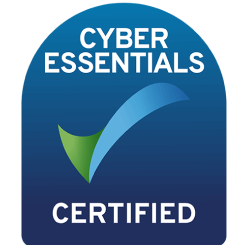7. Write for your target audience
Every product, service, and even a simple white paper has its own target audience. Before writing content, you should define it.
If you know that the main group reading you are men aged 35 to 50 years old with a desire to find information about car repair, your task is to provide the text specifically for them. Content on the same topic, written for young people from 18 to 25 years old, may not be relevant to them, and you will lose some of your potential customers.
For example, young Internet users love more humor, funny GIFs, and slang conversation. And middle-aged people will appreciate your video content and translation of the text format into an audio podcast, which will allow you to listen to important information for yourself on the way to work.
8. Tell a story
Using stories is the key to a client’s heart. Captivating style and mesmerizing presentation will draw readers to your product. Share your brand/product or customer interactions with you in this style, and you’ll be tempted to share your story with loved ones. This way, more people will learn about you and interact.
9. No ambiguity
The information presented should be extremely clear. The reader should not have additional questions about the written text. Write easily and clearly, avoiding ambiguous phrases. If this is a technical text, give as much useful content as possible so that the person understands each term.
10. Correct references
Most of the texts are based on references. They must be verified and reliable so as not to mislead readers. Use statistics, interesting facts, and quotes in the text. You can add a link to the source so that users can see for themselves the credibility of the data. In this way, you will grab attention and build the trust of your target audience.
Before choosing a reference, do your research. This is the main and most difficult part of creating effective content. To get started, go to a search engine and see expert articles on your chosen topic. Evaluate comments on blog articles and how users are responding to them. Look what is written in the material, what questions were worked out, and what was left out by the author. Do bug fixes instead, and incorporate important details into your text.
11. Find a good topic
Before writing an article, its topic is determined. This is also a difficult and very important stage. To get on the right track, ask yourself the question “What is important to my users?” or “How can I help them?”
To do this, assess the market of competitors, conduct a social survey or a detailed analysis of your target audience. The relevance of the topic is important not only for sites but also for blogs on social networks.
Use search tools like Google Trends, BuzzSumo, or Feedly. They will help you find what you need.
12. A little humor
It is extremely important for social media to include humor in your posts. They are rife with content and all methods must be used to grab the user’s attention. It has become important for blogs on websites as well. it is a great way to calm and relax the reader, as well as dilute boring technical text.
13. Update constantly
Updating your blog content periodically is an essential tool in keeping it up to date. Change research data, follow new trends, and implement changes in every text. It can be read in 5 years, but it must remain relevant.
It is also important to update the presentation appearance and introduce new features. Users are becoming pickier and pickier about content – do not miss your audience just because they are not ready to follow new trends in internet marketing.
14. Target one reader
When creating content, focus on one reader. That is, visualize a single user as the main target person. This will enhance the flow of the text and create a powerful subtext. Everyone who reads it will feel a personal connection with the author.
In a blog, it is important to use personalization with the direct appeal of “you”. It is extremely important because every user reading the text wants to find the answer to his question and solve a personal problem.
When you write a blog, do not focus on yourself, your focus should only be on the readers. When they trust you, you become important to them. They will definitely respond with care and interest, but all this over time. Exclude from the texts “I”, “We”, “Our” – only benefit for the client and appeal to him.
15. Keywords
Using keywords is a direct way to increase your site’s search rankings. In addition, they will allow you to provide your content to those users who will find it useful. Add them every 500 sws so as not to lose relevance and be of benefit to readers.
Conclusion
Unfortunately, there is no gold standard for how to create the perfect content. All advice is a collective image. They should be used depending on the platform where the text will be displayed, the target audience to which it is targeted, and the style used to create it. In content, everything is important, from eliminating errors to the correct placement of headings. To understand how well you managed to create your content, always ask the users for their opinions. Ask to leave comments, write to you personally by mail and support any feedback. Analyze the data and create your own personal style. With the experience gained, any content you create will be effective.


![]() 9 minutes
9 minutes




































